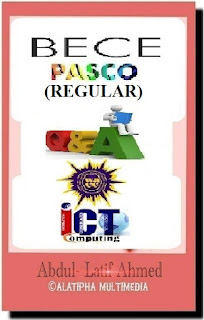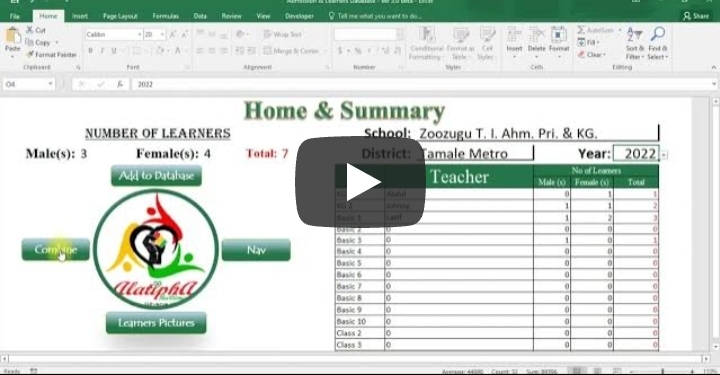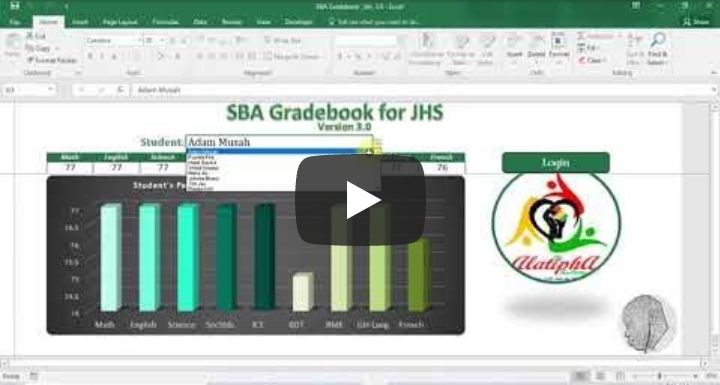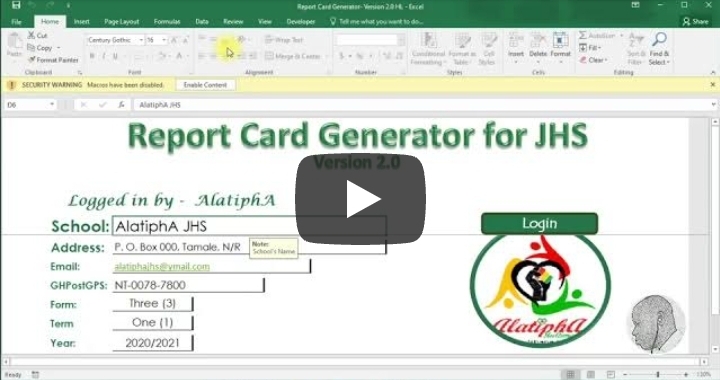Chapter 1: The Effective Teacher
Chapter 1: The Effective Teacher
Chapter Overview
How easily or quickly could you answer the question: What is an effective teacher? This question has been asked by every teacher, young or old. It is a deceptively simple question, for it has many different answers. Teaching is a complex and difficult task that demands extraordinary abilities. Despite decades of experience and research, one of the most important questions in education today is: What is an effective teacher?
This chapter offers no pat definitions of an effective teacher. Instead, the goal is to introduce you to practices used by effective teachers that are related to positive outcomes in learners. These effective teaching practices do not tell the whole story of what an effective teacher is, but they do form an important foundation to help you become an effective teacher and profit from the chapters ahead.
Subsequent chapters blend these practices with other activities, such as lesson planning, problem-based learning, questioning strategies, classroom management, and learner assessment, and the attitudes and dispositions you will need to build a warm and nurturing relationship with your students. These topics will give you a rich and comprehensive picture of an effective teacher and, most importantly, help you become one.
This chapter introduced you to definitions of effective teaching and key behaviours that help achieve it. Its key terms and main points were:
What Is an Effective Teacher?
Early definitions of effective teaching focused primarily on a teacher's goodness as a person and only secondarily on his or her behaviour in the classroom.
The psychological characteristics of a teacher—personality, attitude, experience, achievement, and aptitude—do not relate strongly to the teacher's behaviour in the classroom.
A New Direction
Most modern definitions of effective teaching identify patterns of teacher-student interaction in the classroom that influence the cognitive and affective performance of students.
Many studies found patterns of interaction between teacher and learner that consistently produced desirable student outcomes in the form of greater motivation to learn, higher achievement, increased problem solving, and improved learning skills.
Classroom interaction analysis is a research methodology in which the verbal interaction patterns of teachers and students are systematically observed, recorded, and related to student performance.
Key Behaviours Contributing to Effective Teaching
Five key behaviours for effective teaching and some indicators pertaining to them are the following:
- Lesson clarity: logical, step-by-step order; clear and audible delivery free of distracting mannerisms.
- Instructional variety: variability in instructional materials, questioning, types of feedback, and teaching strategies.
- Task orientation: achievement (content) orientation as opposed to process orientation, maximum content coverage, and time devoted to instruction.
- Student engagement: limiting opportunities for distraction and getting students to work on, think through, and inquire about the content.
- Success rate: 60% to 70% of time spent on tasks that afford moderate-to-high levels of success, especially during expository or didactic instruction.
Some Helping Behaviours Related to Effective Teaching
Five helping behaviours for effective teaching and some indicators pertaining to them are the following:
- Using student ideas and contributions: Using student responses to foster the goals of the lesson and getting students to elaborate on and extend learned content using their own ideas, experiences, and thought patterns.
- Structuring: Providing advance organizers and cognitive or mental strategies at the beginning of a lesson and creating activity structures with varied demands.
- Questioning: Using both content (direct) and process (indirect) questions to convey facts and to encourage inquiry and problem solving.
- Probing: Eliciting clarification, soliciting additional information, and redirecting when needed.
- Teacher affect: Exhibiting vigor, involvement, excitement, and interest during classroom presentations through vocal inflection, gesturing, eye contact, and animation, communicating a warm and nurturing relationship to the learner.
Teaching Effectively with Diverse Learners and Content
The key behaviours, such as lesson clarity, instructional variety, and teacher's task orientation appear to be consistently effective across all or most teaching contexts.
The helping behaviours, such as use of student ideas and contributions, structuring, and questioning, can be thought of as helping behaviours for performing the five key behaviours. These behaviours may be applied differently in helping lower and higher SES students achieve success and across areas of instruction, such as the teaching of reading and the teaching of mathematics.
The Complexity of Teaching
Effective teaching involves the orchestration and integration of key and helping behaviours into meaningful patterns to create effective teaching practices.
Professional Teaching Standards
Governed by a board of directors, the majority of whom are classroom teachers, the National Board for Professional Teaching Standards (NBPTS) proposed five propositions essential to effective teaching.
The Interstate New Teacher Assessment and Support Consortium (INTASC) standards are written as 10 principles, which are then further explicated in terms of teacher knowledge, dispositions, and performances-in other words, what a beginning teacher should know and be able to do.
Your Transition to the Real World of Teaching
Fuller (1969) postulated three stages of concerns through which teachers pass on the way to becoming a professional:
- concern for self,
- concern for the teaching task, and
- concern for their impact on learners.
Multiple Choice Questions
Instructions
Click on 'Details' below to begin the test
2. Which of the following is not considered key a behaviour essential for effective teaching?
3. Clarity is related to all of the following cognitive behaviours except...
4. Studies have found the amount of disruptive behaviour to be ….. and the degree of student attention to be ….. in classrooms that had more varied activities and materials.
5. Researchers have found that students who spend more than the average time in high-success activities have...
6. When attempting to develop higher-order thinking skills, a teacher will probably ask more ….. questions than ….. questions.
7. Inquiry or independent discovery is usually the product of a teacher's use of …
8. According to Table 1.8 in the textbook, which is not an appropriate teaching behaviour in helping lower SES students achieve success?
9. When teaching, emphasizing a more direct approach is usually more appropriate for ….. and emphasizing a more interactive approach is usually more appropriate for …...
10. An effective teacher exhibits....
True/False
Instructions
Click on 'Details' below to begin the test
2. Licensure and exit tests are the best predictors of classroom performance of teachers.
3. If a person teaches with a high degree of clarity, he/she will spend less time going over material.
4. Student performance is higher in classes where the teacher devotes large amounts of time to the process and materials needed rather than teaching content.
5. Constructivism is an approach to teaching that allows students to construct their own understandings and meanings.
6. Teacher-mediated dialogue helps learners restructure what is being learned using their own ideas, experiences, and thought patterns.
7. Constructivist teaching strategies encourage teachers to use lecture and telling as their main teaching strategy.
8. The SES of students is determined by the income of their parents and the education level of the students themselves.
9. An effective teacher has mastered all of the key behaviours and helping behaviours.
10. During the first stage of teaching, a teacher's main concern is survival of self.
11. The degree of a student's engagement with a learning task is obvious.
12. If students generally complete school tasks at moderate to high rates of success, they will probably grow bored in class and suffer from a negative attitude.
13. One of the most important abilities teachers must develop is the ability to be flexible - to sense when a change from one emphasis to another is necessary.
14. "Chapter 1" schools are those in which students have many economic and educational advantages.
15. Teachers need a ready vocabulary of praise words to acknowledge and reward student effort. Some of the best of these words are: "good," "correct," and "right.".
16. Studying the practices used by effective teachers is necessary to becoming an effective teacher.
17. A role model definition of effective teaching followed attempts to identify psychological characteristics of effective teachers (e.g., personality, attitude, experience, and aptitude and/or achievement).
18. What a teacher doesn't say is every bit as important as what a teacher does say.
19. A teacher's employment experience (other than teaching) predicts little of his or her day-to-day classroom effectiveness.
20. Research has identified specific teacher behaviours which consistently relate to desirable student performance.
21. Teachers should ask questions for which there is a single "right" answer most of the time.
22. There is a large body of research about the effects of SES (socioeconomic status) on the educational achievement of students at the secondary level.
23. Students feel important and are encouraged to participate in class 'When a teacher uses their ideas in moving a class lecture or activity forward.
24. Effective teachers use careful language such as "might be" or "could possibly happen" to avoid overstating lesson ideas.
25. Effective teachers use students' responses and ideas in a number of ways to enhance classroom environment and student learning.
26. Process questions help students use their own knowledge to think more deeply about a concept.
27. Extremely enthusiastic teachers are most effective in encouraging student achievement.
28. Teachers typically progress through three stages of concern in their careers.





.png)




























Comments
Post a Comment